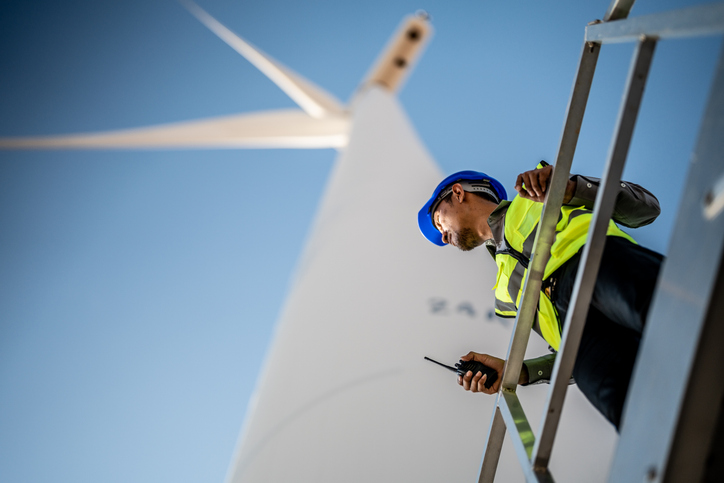
M2257 - Entanglement and fall from height during lifting operations
Initial Report
A crew transfer vessel was performing lifting operations at an offshore wind turbine. A deckhand and a trainee deckhand were assigned to receive four lifting bags attached to a three-legged wire sling. The trainee lowered the load, detached it from the slings, and signalled the crane operator to raise the hook.
As the hook and wire sling were raised, they became entangled with the trainee’s work restraint lanyard. The trainee immediately signalled an emergency stop, but the crane operator neither saw nor heard the signal. As a result, the trainee was lifted off the deck. While suspended, the trainee’s weight caused the entanglement to release, leading to a fall of approximately one to two metres onto a pile of bags on the deck.
The trainee’s lanyard was worn loosely, increasing the risk of snagging. Additionally, the trainee was too close to the lifting equipment and did not use a tagline or maintain control of the equipment to prevent entanglement. The crane operator’s failure to respond to the emergency stop signal further exacerbated the situation.
CHIRP Comment
While lifting operations can be undertaken by only two people, ideally, three people should be involved: a crane operator, a rigger, and a banksman/supervisor. In this incident, the trainee deckhand was acting as the rigger, and the more experienced deckhand was the banksman, who should have ensured that the trainee was correctly dressed (with no snagging hazards) before the work commenced.
To be safe, all persons should remain in sight of one another, and operations should stop automatically if line of sight is lost.
Key Issues relating to this report
Situational Awareness—Before starting any lifting operation, assess your position and that of the other crew members. Never begin the lift if you are uncertain.
Capability—Rigorous and reinforcement training should be given to the crew working in these high-pressure environments. How often do you carry out lifting operations training?
Communications—Clear verbal and visual communication is essential for safe lifting operations. Crane operators should not start lifting until they communicate with the deckhand.
Alerting- The crane operator and the deckhand were not alone, and other crew could have assisted by advising that safe lifting operations had not been established. If you saw this situation, would you step in to stop the job if you saw this happening?
Pressure- There can be pressure when there is a deadline to meet. Even if no one says it out loud, you feel it. But pressure should never override your training. The job is important, but so are you.
Key Takeaways
Seafarers, “If you are unsure, stop the lift.”
Before any lift, check your position and where your crewmates are. If something does not feel right, speak up. You are not alone—support each other and stop the job if needed. No task is worth a life.
Ship managers, “Good training keeps crews safe under pressure.”
High-pressure operations need high-quality, regular training. Focus on real-life scenarios, not just checklists. Reinforce what good looks like—and give crews the confidence to act when things feel wrong.
Regulators, “Look beyond the paperwork—watch how people work.”
Safe lifting depends on clear communication, awareness, and confidence to speak up. Check if procedures work in practice. Support systems where stopping a job is seen as good seamanship, not failure.